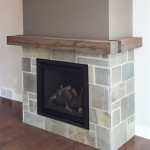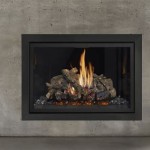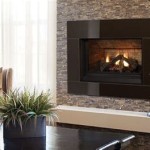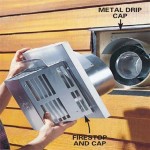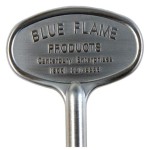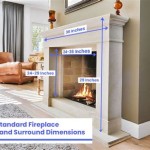Elevating Your Living Room with Fireplace Decor
The fireplace, traditionally a source of warmth and light, has evolved into a significant focal point in the modern living room. Its presence often dictates the overall aesthetic and provides an opportunity to express personal style. Thoughtful fireplace decor can transform a standard living space into a cozy, inviting, and aesthetically pleasing environment. The key lies in understanding the various elements that contribute to a well-decorated fireplace, from the mantelpiece to the surrounding area, and how they can be harmonized to create a cohesive and visually appealing design.
Achieving effective fireplace decor is not merely about placing objects. It requires consideration of the fireplace's architectural style, the room's existing decor, and the desired ambiance. The goal is to create a balanced composition that enhances the fireplace's natural beauty while complementing the rest of the living room. This often involves strategic use of color, texture, and scale to draw the eye and create a sense of visual interest.
Selecting the right decorative elements for a fireplace is an iterative process, influenced by personal taste, budget, and the inherent constraints of the space. It is advantageous to consider various themes, design styles, and material options before committing to a specific look. Whether the aim is to create a minimalist, modern, rustic, or traditional aesthetic, the fireplace decor should contribute to the overall harmony and functionality of the living room.
Key Point One: Mantelpiece Mastery
The mantelpiece, a projecting shelf above the fireplace, is the primary stage for decorative displays. Its dimensions and material composition influence the types of items that can be effectively showcased. A wide mantelpiece offers greater flexibility, allowing for larger items or a greater number of smaller objects. A narrow mantelpiece, on the other hand, may necessitate a more minimalist approach with fewer, strategically placed accents.
The selection of items for the mantelpiece should be based on a principle of visual balance. This does not necessarily imply perfect symmetry, but rather a composition where the weight and distribution of objects are aesthetically pleasing. Anchoring the display with a central focal point, such as a large mirror, painting, or sculptural piece, is a common strategy. Flanking this focal point with complementary items, such as candlesticks, vases, or framed photographs, creates a sense of harmony and depth.
When selecting items for the mantelpiece, it is crucial to consider their scale and proportion relative to the fireplace and the surrounding room. Overly large items can overwhelm the space, while overly small items can appear insignificant. Aim for a balance that allows each element to contribute to the overall aesthetic without overpowering the others.
Seasonal decorations are also a popular choice for mantelpieces. Changing the decor to reflect the current season or holiday can add a touch of festivity and warmth to the living room. This might involve incorporating natural elements such as leaves, branches, or flowers, or adding themed decorations such as pumpkins for autumn or garlands for Christmas. When incorporating seasonal decorations, it is important to maintain the same principles of balance and proportion to ensure a cohesive and visually appealing display.
Furthermore, consider the material composition of the mantelpiece itself. Whether it is made of wood, stone, brick, or some other material, the existing aesthetic will influence the types of decorative items that will best complement it. A rustic wooden mantelpiece might be enhanced by natural textures such as woven baskets or dried flowers, while a sleek stone mantelpiece may benefit from more modern and minimalist decorations.
Key Point Two: Hearth as a Decorative Element
The hearth, the area directly in front of the fireplace, is often overlooked as a decorative element. However, it presents a valuable opportunity to enhance the overall fireplace design. The hearth can be utilized in various ways, from providing a functional surface for firewood storage to serving as a platform for decorative objects.
If the fireplace is functional, the hearth provides a practical space for storing firewood. This can be achieved by using decorative log holders or baskets, which add a rustic touch to the living room. The arrangement of the firewood can also contribute to the overall aesthetic. Stacking the logs in a neat and organized manner creates a sense of order and visual appeal.
Beyond firewood storage, the hearth can serve as a platform for displaying decorative items. Larger plants, sculptures, or decorative lanterns can be placed on the hearth to add visual interest and create a more inviting atmosphere. When selecting items for the hearth, it is important to consider their scale and proportion relative to the fireplace and the surrounding room.
The material composition of the hearth itself can also be a significant factor in determining its decorative potential. A hearth made of stone or brick can add a rustic and earthy feel to the living room, while a hearth made of tile or marble can create a more modern and elegant aesthetic. The choice of material should be consistent with the overall design of the fireplace and the surrounding room.
Rugs or cushions can also be placed on or in front of the hearth to add warmth and comfort to the space. A soft rug can create a cozy and inviting atmosphere, while decorative cushions can add a touch of color and personality. The choice of rug and cushions should be consistent with the overall color scheme and design of the living room.
Safety considerations are paramount when decorating the hearth, especially if the fireplace is in use. Flammable materials should be kept at a safe distance from the fire, and any decorative items should be stable and secure to prevent them from falling or creating a hazard. Common sense and adherence to safety guidelines are essential to ensure a safe and enjoyable experience.
Key Point Three: Surrounding Walls and Architectural Integration
The area surrounding the fireplace, including the walls and any built-in features, offers further opportunities for decorative enhancement. The color and texture of the walls, the presence of shelving units or alcoves, and the overall architectural style can all be leveraged to create a cohesive and visually appealing fireplace design.
The color of the walls surrounding the fireplace can significantly impact the overall aesthetic. A neutral color palette can create a calming and serene atmosphere, while bolder colors can add a touch of drama and personality. The choice of color should be consistent with the overall color scheme of the living room and should complement the fireplace itself.
Artwork is a classic choice for decorating the walls surrounding the fireplace. A large painting or a collection of smaller framed prints can add visual interest and create a focal point. The artwork should be chosen to complement the style and colors of the fireplace and the surrounding room. The arrangement of the artwork should be carefully considered to create a balanced and aesthetically pleasing composition.
Shelving units or alcoves built into the wall surrounding the fireplace offer additional storage and display space. These can be utilized to showcase books, decorative objects, or personal collections. The arrangement of items on the shelves should be carefully considered to create a visually appealing and organized display. Avoiding clutter and maintaining a sense of balance are essential.
Mirrors can also be used to enhance the space surrounding the fireplace. A large mirror placed above the mantelpiece can visually expand the room and reflect light, creating a brighter and more open atmosphere. Smaller mirrors can be used to add a touch of glamour and sophistication.
Consideration of the architectural style of the fireplace and the surrounding room is crucial. A traditional fireplace in a traditional home might be enhanced by classic artwork, ornate mirrors, and rich fabrics. A modern fireplace in a modern home might benefit from minimalist decor, geometric shapes, and clean lines. Matching the decor to the architectural style of the space creates a sense of harmony and coherence.
Ultimately, successful fireplace decor requires a holistic approach that considers all elements of the fireplace and its surrounding environment. By carefully selecting and arranging decorative items, considering the principles of balance and proportion, and paying attention to the architectural style of the space, it is possible to transform a standard fireplace into a stunning focal point that enhances the beauty and functionality of the living room.

40 Best Fireplace Décor Ideas Mantel

Fireplace Living Room Farm House Family Design Remodel

11 Appealing Living Room Designs With A Fireplace

Fireplace Design Ideas For Your Home Designcafe

Lovely Painted Brick Fireplaces In The Living Room Beautiful Homes

36 Fireplace Decor Ideas Modern Mantel
:strip_icc()/Neustadt-9372-cf724f80958b43b2b76307f99738019a.jpg?strip=all)
23 Living Rooms With Fireplaces Made For A Night In

40 Fab Fireplace Mantel Ideas Design Photos

Custom Built Fireplace Ideas For A Living Room

ᑕ❶ᑐ Fireplace Decor Ideas For An Empty Living Room

